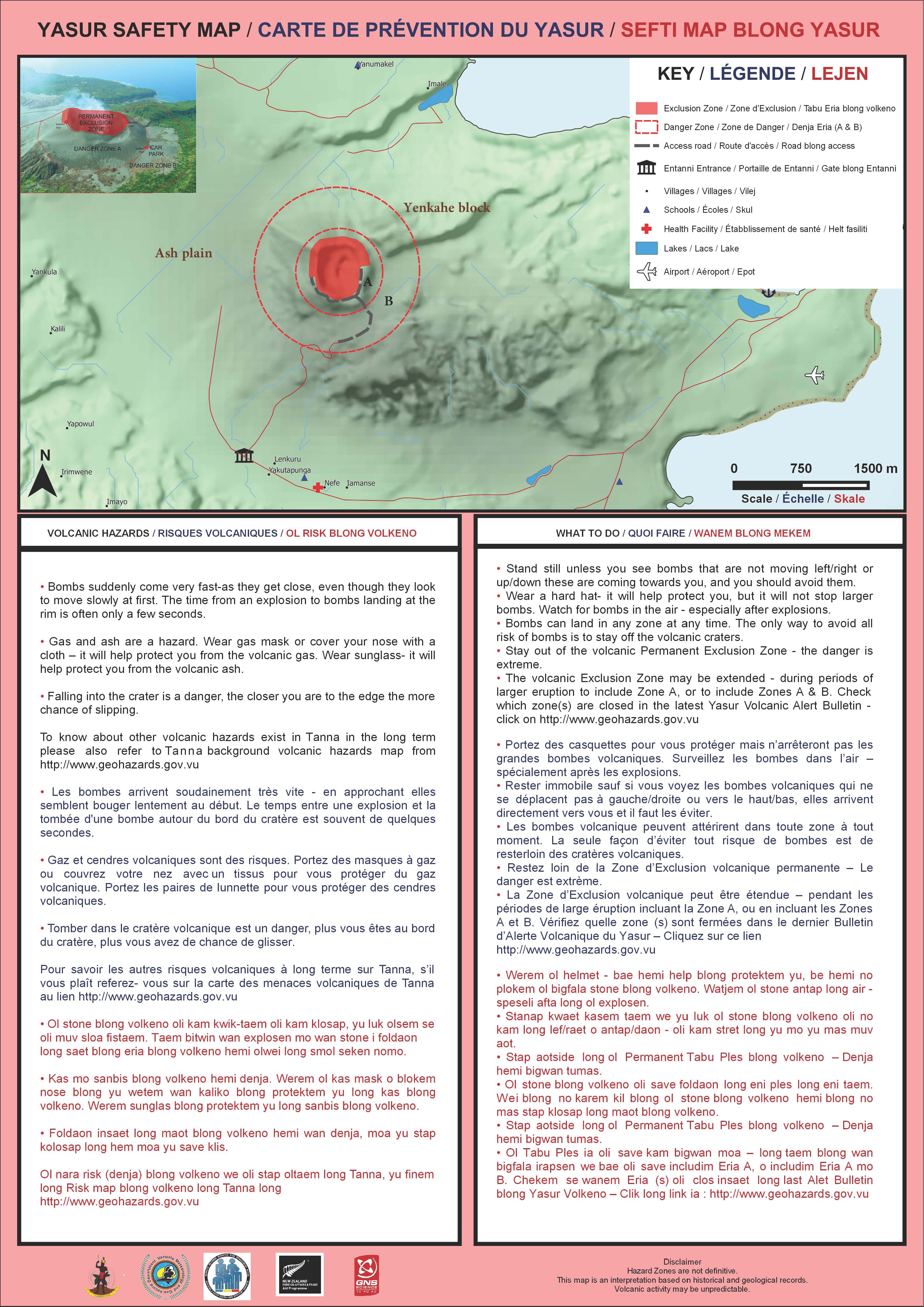Report on Yasur (Vanuatu) — December 2016
Bulletin of the Global Volcanism Network, vol. 41, no. 12 (December 2016)
Managing Editor: Edward Venzke.
Research and preparation by Paul Berger.
Yasur (Vanuatu) Frequent explosions and thermal anomalies continue through October 2016
Please cite this report as:
Global Volcanism Program, 2016. Report on Yasur (Vanuatu) (Venzke, E., ed.). Bulletin of the Global Volcanism Network, 41:12. Smithsonian Institution. https://doi.org/10.5479/si.GVP.BGVN201612-257100
Yasur
Vanuatu
19.532°S, 169.447°E; summit elev. 361 m
All times are local (unless otherwise noted)
A previous report on Yasur (also called Tanna) from November 2013 (BGVN 38:11) noted weak explosions with ash and steam emissions during several months of 2013. This report discusses activity from December 2013 through October 2016. No reports about Yasur from the Vanuatu Geohazards Observatory (VGO) for 2014 are known.
A report from VGO on 27 April 2015 noted that the volcano continued in a state of unrest, and the Alert Level remained at 1 (on a scale of 0-4). VGO reminded residents and tourists that areas near the crater and areas prone to ash and gas as carried by the trade winds should be avoided. On 13 November VGO reported that activity had increased, with more intense explosions. The Alert Level was raised to 2. On 15 December 2015, VGO again reported that explosions had become more intense.
On 14 January 2016 VGO reported that explosions had become more intense, but the baseline level or previous reference day for that evaluation was not specified. Tour operator John Seach (Volcano Live), who makes frequent trips to the summit craters, described the continuing eruption in January 2016 as mildly Strombolian. VGO noted that explosions remained intense in reports from 31 March, 27 May, 28 June, 2 August, 9 September, and 10 October 2016. VGO reminded residents and tourists to avoid the permanent Exclusion Zone within 600 m of the crater (figure 45); the Alert Level remained at 2.
 |
Figure 45. Yasur Safety Map showing the hazard zones and nearby infrastructure. Courtesy of the Vanuatu Geohazards Observatory. |
MODIS/MODVOLC thermal anomalies were numerous during the reporting period, with at least one every month. The MIROVA (Middle InfraRed Observation of Volcanic Activity) volcano hotspot detection system, also based on analysis of MODIS data, detected almost continuous anomalies during October 2015-September 2016; the radiative power of the hotspots were all in the low or moderate range.
Geological Summary. Yasur has exhibited essentially continuous Strombolian and Vulcanian activity at least since Captain Cook observed ash eruptions in 1774. This style of activity may have continued for the past 800 years. Located at the SE tip of Tanna Island in Vanuatu, this pyroclastic cone has a nearly circular, 400-m-wide summit crater. The active cone is largely contained within the small Yenkahe caldera, and is the youngest of a group of Holocene volcanic centers constructed over the down-dropped NE flank of the Pleistocene Tukosmeru volcano. The Yenkahe horst is located within the Siwi ring fracture, a 4-km-wide open feature associated with eruption of the andesitic Siwi pyroclastic sequence. Active tectonism along the Yenkahe horst accompanying eruptions has raised Port Resolution harbor more than 20 m during the past century.
Information Contacts: Vanuatu Geohazards Observatory (VGO), Department of Geology, Mines and Water Resources of Vanuatu (URL: http://www.vmgd.gov.vu/vmgd/); John Seach, Volcano Live (URL: http://volcanolive.com/index.html); Hawai'i Institute of Geophysics and Planetology (HIGP) MODVOLC Thermal Alerts System, School of Ocean and Earth Science and Technology (SOEST), Univ. of Hawai'i, 2525 Correa Road, Honolulu, HI 96822, USA (URL: 2/12/2016http://modis.higp.hawaii.edu/); MIROVA (Middle InfraRed Observation of Volcanic Activity), a collaborative project between the Universities of Turin and Florence (Italy) supported by the Centre for Volcanic Risk of the Italian Civil Protection Department (URL: http://www.mirovaweb.it/).

